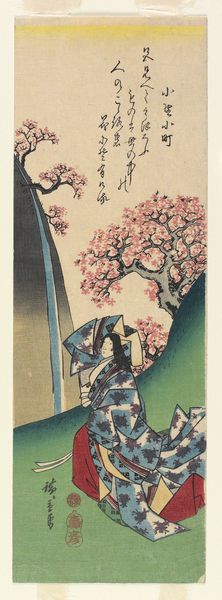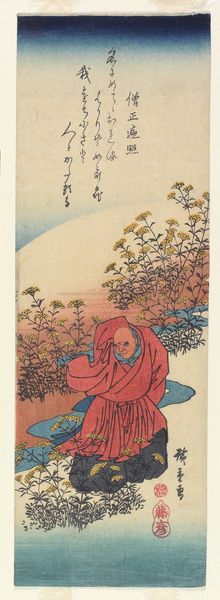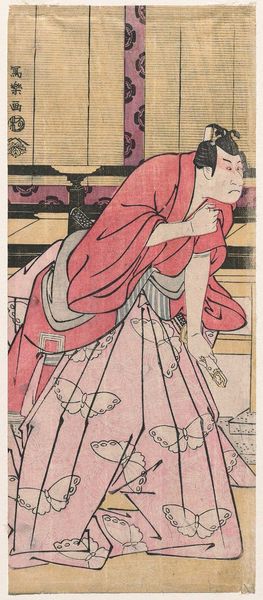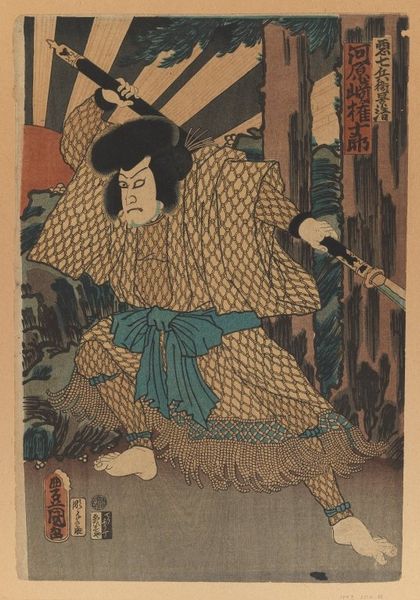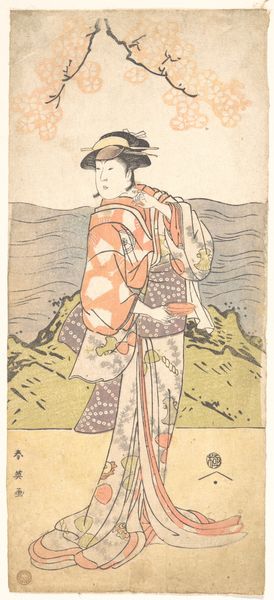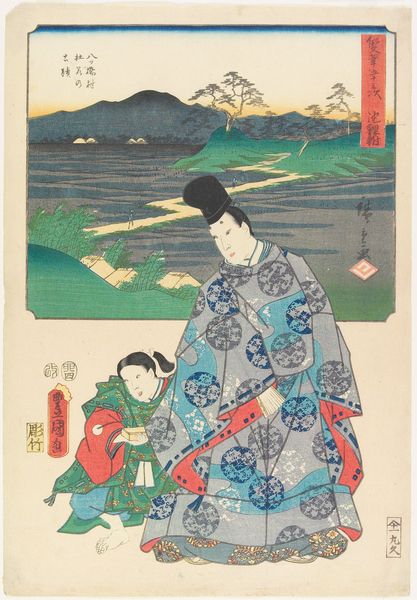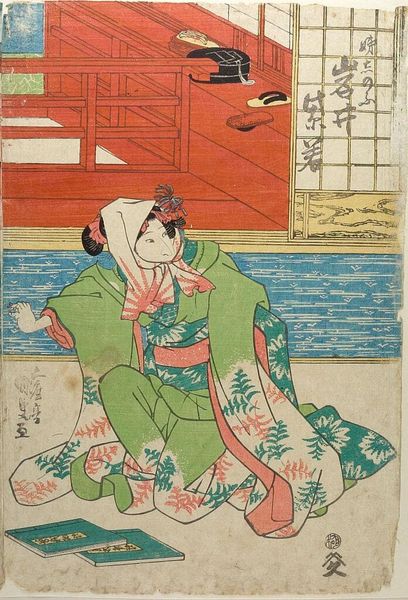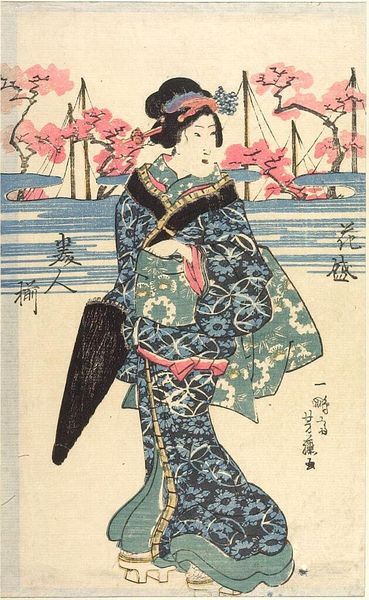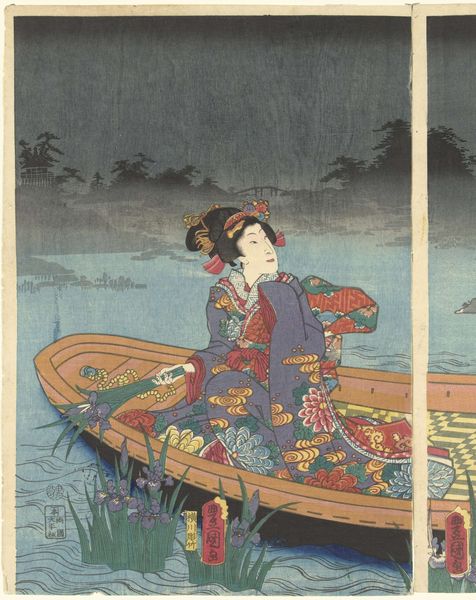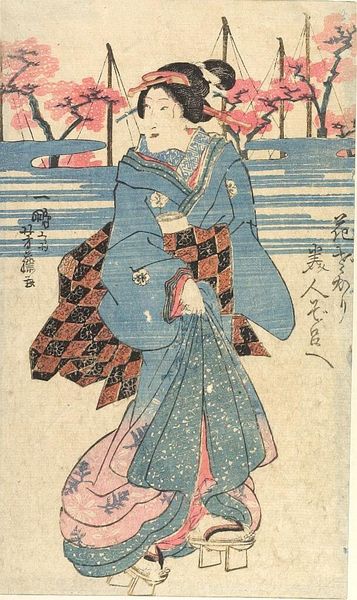
print, ink
# print
#
landscape
#
ukiyo-e
#
japan
#
figuration
#
ink
Dimensions: 14 5/8 × 5 in. (37.2 × 12.7 cm) (image, sheet, chūtanzaku)
Copyright: Public Domain
Curator: This delicate print, residing here at the Minneapolis Institute of Art, is entitled "Ariwara no Narihira." Hiroshige crafted this ukiyo-e woodblock print sometime in the 1830s. Editor: It evokes such serenity. The long, narrow format and pale blues create a dreamy, almost otherworldly space. There's a beautiful melancholy to it, don't you think? Curator: Absolutely. Hiroshige, as with many artists of his era, was fascinated by literary and historical allusions. Here, he depicts Ariwara no Narihira, a renowned Heian period poet and courtier. This imagery reflects a deliberate engagement with classical Japanese aesthetics and aristocratic culture. Editor: So, it's not just a pretty picture; there’s an encoded story here? I see the irises; in Japanese iconography, aren’t they linked to purification, transition, and even protection from evil? Curator: Indeed. The irises serve multiple functions. Beyond any inherent symbolic weight, their depiction here gestures towards the specific episode in the "Tales of Ise," where Narihira composes a famous poem upon seeing irises in bloom at a place called Yatsuhashi. So the setting itself connects directly back to that specific historical and cultural narrative. Editor: The repetition of the wooden planks also feels significant. Almost like stepping stones, perhaps a journey, a transition… fitting with those iris associations. The man himself is set against that striking diamond pattern—an immediate suggestion of both complexity and control, the societal structure that bound him and the world he knew. Curator: Precisely. His attire reflects his status, albeit somewhat romanticized in retrospect. Hiroshige leverages the historical figure to evoke a sense of longing for a past age, an imagined courtly ideal. The placement, too: the figure isn’t at the centre but embedded within the landscape. Editor: That off-centeredness keeps the image dynamic, doesn’t it? As if the story continues outside the borders of the work itself. And thinking about how that plays with cultural memory—this idealized figure navigating a real, symbolic world... it makes one wonder how later audiences would see their reflections. Curator: And that's part of what makes Hiroshige so significant: his art continues to spark connections between past and present, symbol and reality, inviting each generation to consider anew the narratives we inherit and the images that shape our understanding. Editor: It’s powerful how an image, conceived so long ago, continues to resonate across time. I think that I might need to study Japanese irises.
Comments
No comments
Be the first to comment and join the conversation on the ultimate creative platform.
